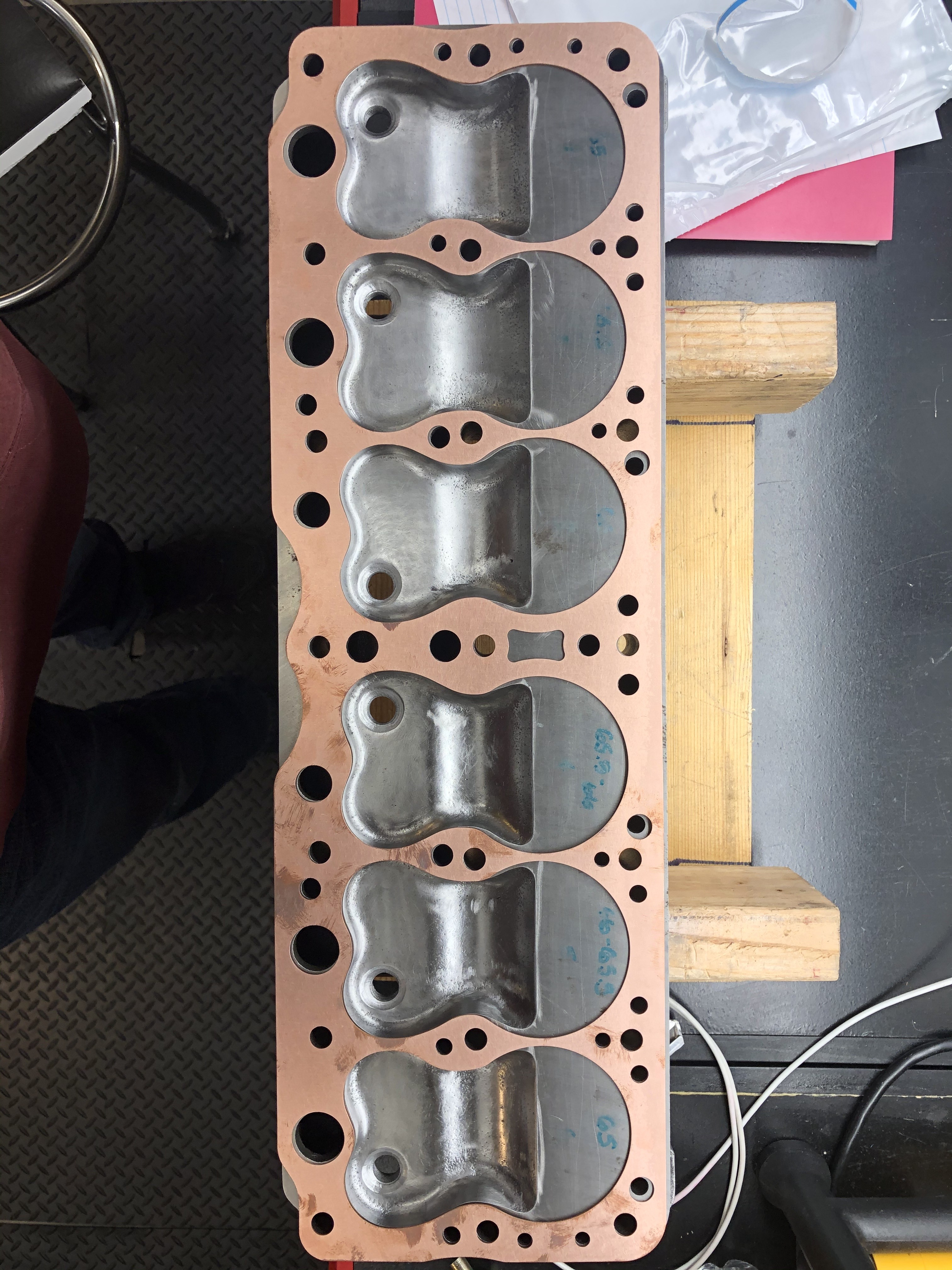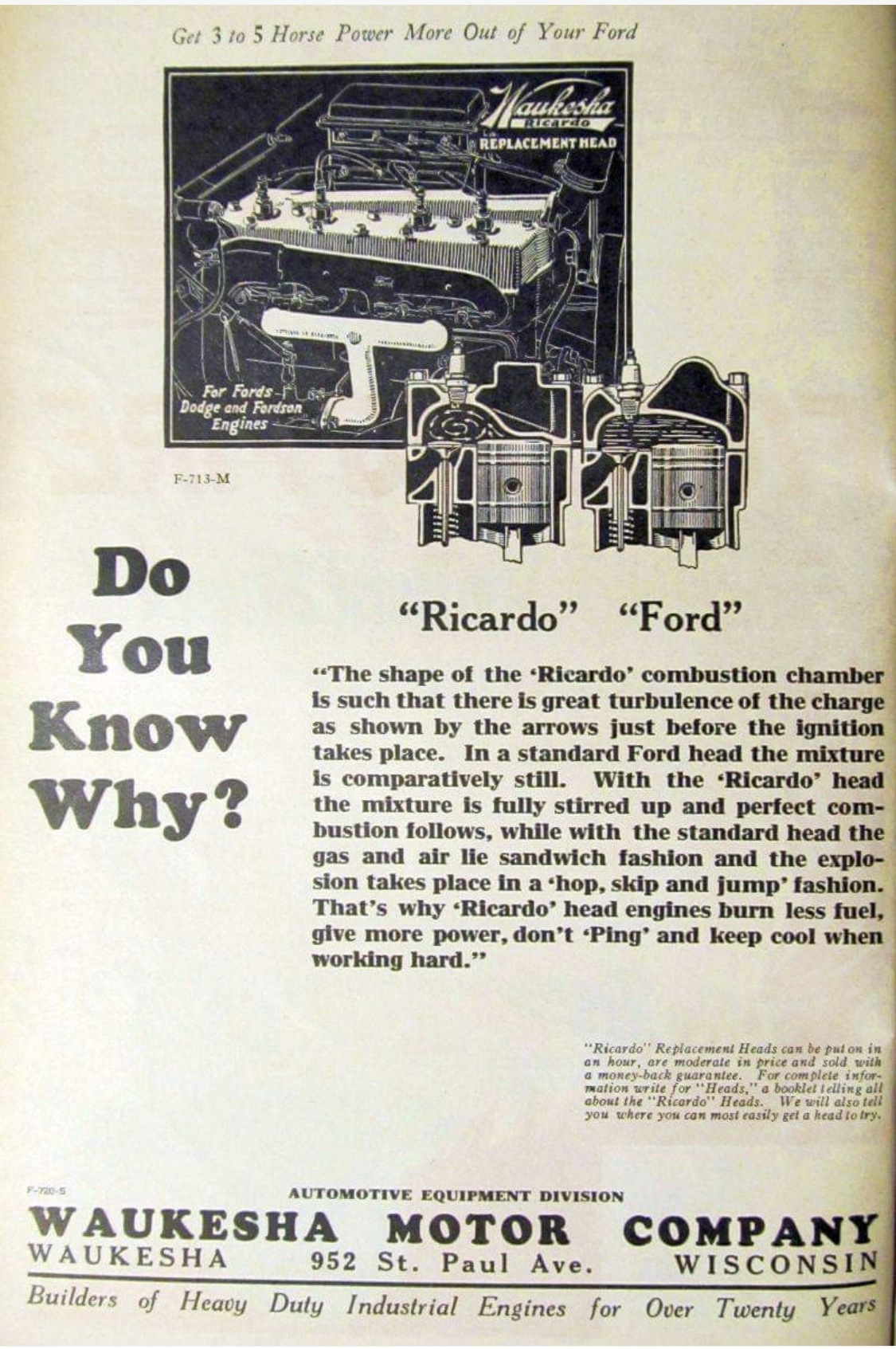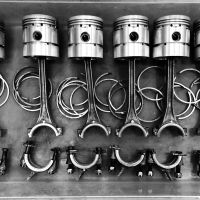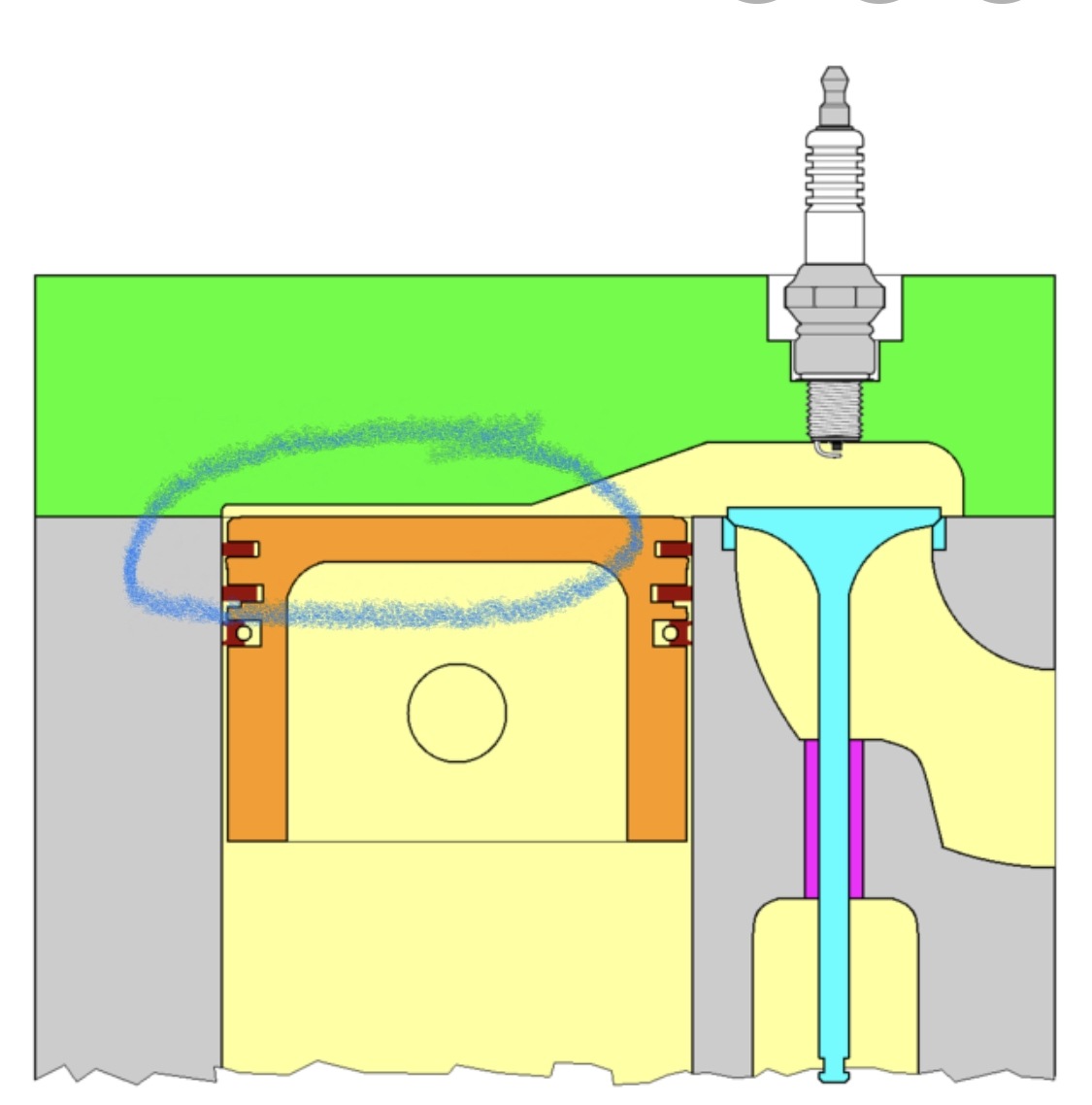Custom Head Gasket for 212ci engine
Comments
-
Question: What is the compressed height of a stock gasket?0
-
I’m not 100% on this but when I mic’d my used gel pro gasket off my 212 engine I came up with between 0.060” to 0.065”. Hopefully someone who knows for sure can chime in.0
-
Today I ordered up the custom gasket with a compressed height of 0.030 inch. Thus I wanted to share a bit of information on Squish or Quench so that others may benefit from this as well.
Sir Ricardo was the one who came up with the idea of Squish and it was to create turbulence in the combustion chamber to mix & burn the fuel better. Hudson believed in his design and made it a part of their combustion chamber design from the splasher engines to the big six’s. Only thing that’s changed since then is what the ideal squish / quench height should be between the top of the piston and the head’s flat surface above it. With a side valve engine achieving the correct squish height is very important to a good running engine. Hope this helps someone!See the attached articles:0 -
I'm looking forward to seeing how well this engine performs, as you've gone quite a bit further than I did with my 212 which went like a rocket after the work I did. When calculating squish, what was your deck clearance? ie how far below the block deck was the piston at TDC?0
-
I measured my pistons below the deck at approximately 0.015” so with a compressed height of the gasket at 0.030” I’ll be at 0.045” for squish area, between piston top & head over piston. I was told by a couple knowledgeable (non ford) Flathead guys that 0.040” is ideal & very important on our side valve flathead engines. The great thing is it’s a relatively easy thing to change, cost was $79 and I’ll have it within 2 weeks.Last weekend I was tearing apart a Hudson straight 8 that was supposed to have been rebuilt 1500 miles ago. It was terribly fouled up inside, likely due to multiple reasons. However, I couldn’t help but wonder how a proper squish area may have helped this engine since I was measuring the pistons in the hole by 0.020” & more.I too am rather excited to see how the 212 engine runs & will definitely let you know!0
-
The beautiful custom head gasket has arrived!

0 -
I think you would be better off fitting a 169 head from the short stroke motor to gain any significant benefit. this does not have the deep recess of the head pictured.0
-
From memory reading about this project the head is off a 175 cu in with 7.25:1 stamped on the top of the head. I'm interested to see how this works out as Hudson did say in the late '40's was it that with good fuel their flatheads could handle compression of 9:1 or something like that. It's probably a good idea to recurve the distributor advance on a chassis dyno and think about what initial timing to use.0
-
Yes indeed, the head is from a 175 with 7.25:1 stamped on it! I was planning on pulling the distributor to have a friend go through it in the next few days to make sure it’s good to go.That’s a good idea to look at the advance on a chassis dyno. Optimization of the engine on a dyno would be great to do especially since it would give HP & Torque results as well!0
-
When do you think when do you think you'll have the car running? It'll be interesting to see how it runs. I assume you'll be using good fuel. What '37 model do you have exactly?
0 -
BigSky,Thanks for the squish explanation and links; I hadn't heard of this before. After reading them, I did some look-ups and found a couple more things that someone might find interesting:Ricardo's 1919 patent, US1474003A.Ricardo's paper "Recent research work on the internal-combustion engine" in the 1922 SAE Transactions (combustion chamber design is discussed on pages 32-38).
I'm also curious about how early Hudson adopted Ricardo's combustion chamber design? At least there's evidence of it in a 1927 Hudson engine patent, US1656051A (presumably for the 1927-1929 F-head).
0 -

0
Categories
- 36.9K All Categories
- 112 Hudson 1916 - 1929
- 20 Upcoming Events
- 92 Essex Super 6
- 28.6K HUDSON
- 571 "How To" - Skills, mechanical and other wise
- 995 Street Rods
- 151 American Motors
- 178 The Flathead Forum
- 49 Manuals, etc,.
- 78 Hudson 8
- 44 FORUM - Instructions and Tips on using the forum
- 2.8K CLASSIFIEDS
- 608 Vehicles
- 2.1K Parts & Pieces
- 77 Literature & Memorabilia
- Hudson 1916 - 1929 Yahoo Groups Archived Photos




